Children are insane. Or, more precisely, they don’t think logically as adults do. Children aren’t burdened by hardened adult preconceptions and expectations, so suffer fewer roadblocks to learning new things. This different way of seeing things is why children adapt so easily to high tech that confuses the rest of us.
That’s the theoretical basis behind “Mimsy Were The Borogoves,” a classic science fiction tale from 1943 in which two children find a box of toys from the future that they totally grok but which flummox their Euclidian-conditioned parents. (You can read “Mimsy” here or watch the movie version, The Last Mimzy.)
Could we be approaching the unidentified future from which Mimsy’s high tech toys originated?
At the annual Toy Fair, held this past President’s Day weekend in New York city, I found some playthings instilled with bleeding edge technologies even I barely understand but that today’s youngsters should have no trouble taking to just like the children in “Mimsy” – hopefully, without the story’s strange consequences.
For instance, there was a futuristic version of one of the most iconic toys of all time – Barbie. Mattel showed off Hello Barbie Hologram, which is sort of a personalized 3D animated Amazon Alexa.
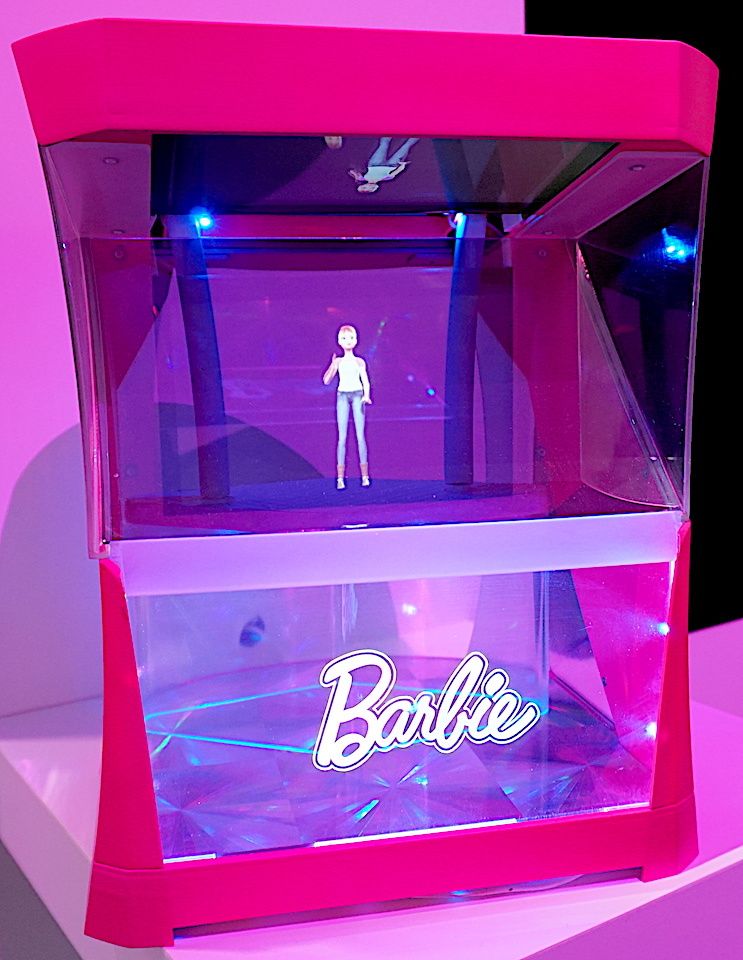
You can ask Hello Barbie Hologram Alexa-like questions, prefaced by “Hello, Barbie,” such as for the weather. But instead of Stephen Hawking-like monotone responses, you get an effervescent Barbie not only playfully announcing the local outdoor conditions, but you get a visual; for instance, if Barbie tells you it’s raining cats and dogs, you get a holographic visual of canines and felines pouring from the sky. You can voice command the hologram Barbie to set alarms, night lights and daily reminders. You can also change hologram Barbie’s size and skin tone and ask her to perform a number of dances.
Hello Barbie Hologram will be available sometime this fall for less than $300.
Mixed Reality Play
VR has been popping up in a few toys in the last couple of years, but at Toy Fair I saw three unique applications that seem to more holistically integrate VR into the design of the toy rather than haphazardly tacked on.
A start-up called Tilt is advancing “textile tech” in its SpinTales, which uses a duvet, a rug and VR to, well, put a new spin on some old stories for children. The SpinTales app includes three stories: Little Red (as in Little Red Riding Hood), 3 Pigs (as in the Three Little Pigs) and Magic Beans (as in Jack and Beanstalk). You then buy either the SpinTales Enchanted Duvet or the throw Jungle Rug ($99.99 each).
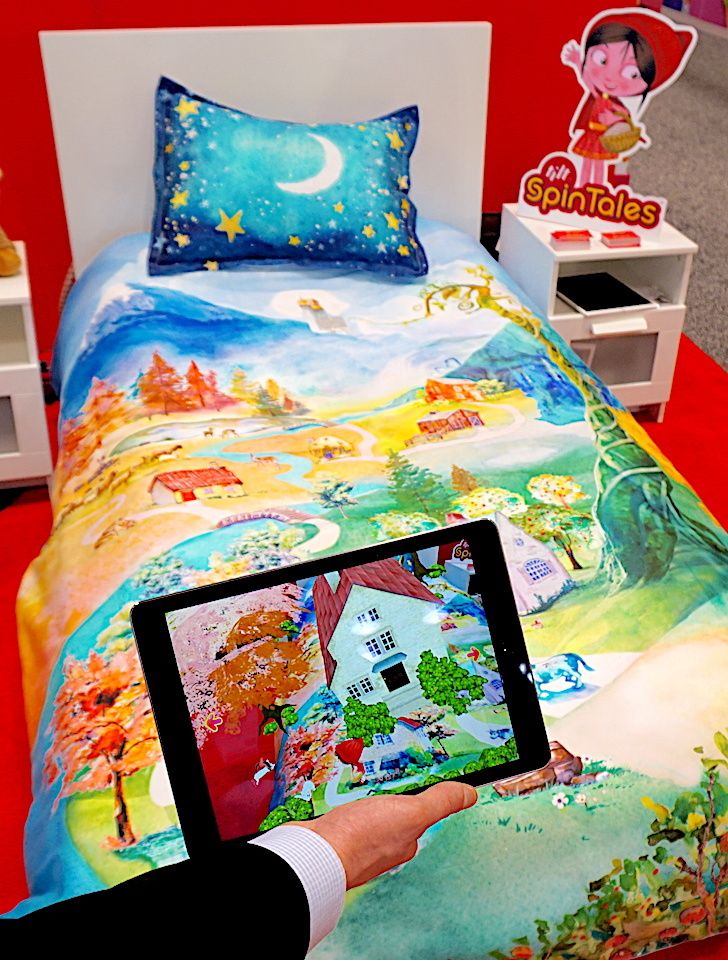
Your child activates one of the games on their smartphone or tablet and picks different activities. When prompted, the child then holds the tablet or smartphone over a matching section on the duvet or rug to activate the 3D VR, which displays an exploration of the immediate vicinity as the character moves around.
What makes SpinTales fascinating is that the bedspread and throw rug are ever-present; they don’t have to dug out of a closet or toy chest or located under a pile of other discarded toys, dirty clothes or the bed.
One of the more fascinating VR games I saw isn’t a product you’ll be able to buy, but a “mixed reality game” technology concept that combines VR and RFID from a Quebec-based developer, bkom Studios. You move physical RFID-equipped tokens around a board; each token then generates a VR character that can be seen on the corresponding app on a smartphone or tablet or a more 360-degree view through VR goggles. Scanning playing cards triggers each character’s activities.
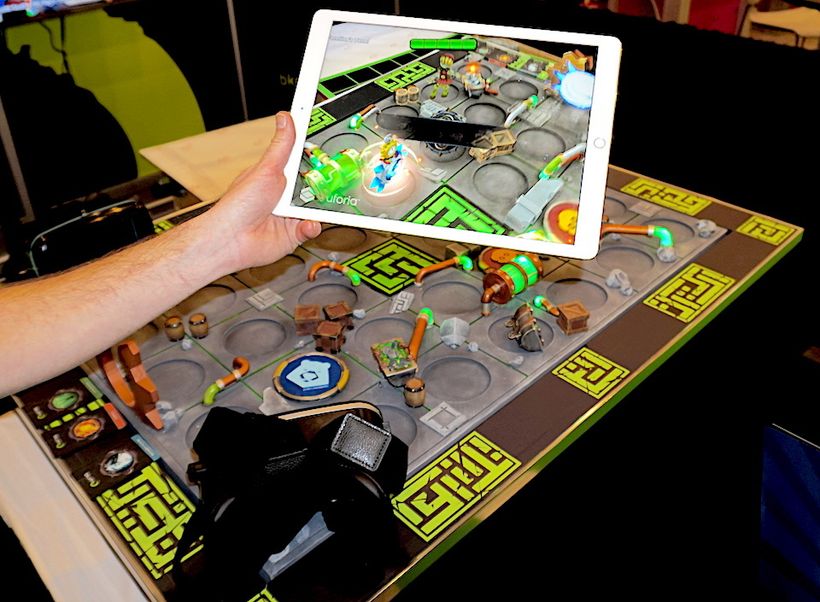
bkom hopes to sell the technology for game developers to create new VR/RFID games.
A mixed reality learning VR plaything you soon will be able to buy is “Animal World with Jessica” from Odyssey ($39.95, April/May). Inside the smart box – the cover acts as an interactive VR game board – includes 65 VR animal cards, VR goggles, eight coloring paper sheets and a combined smartphone/tablet holder.
After downloading the “Animal World” app, a child holds a card so the smartphone or tablet camera can see it, which activates a moving, interactive VR version of that animal viewed on either a touchscreen device or more fully through the VR goggles. The animal can be manipulated while information about it is imparted to the child. Two animals can be created to interact with each other, or your child can switch the camera view and take a selfie with the animal.
At some point, the “Animal World” developers hope to update the app so children will be able to virtually feed the animals as well as talk to them ala Dr. Doolittle. Additional mixed reality educational card sets with different topics are planned.
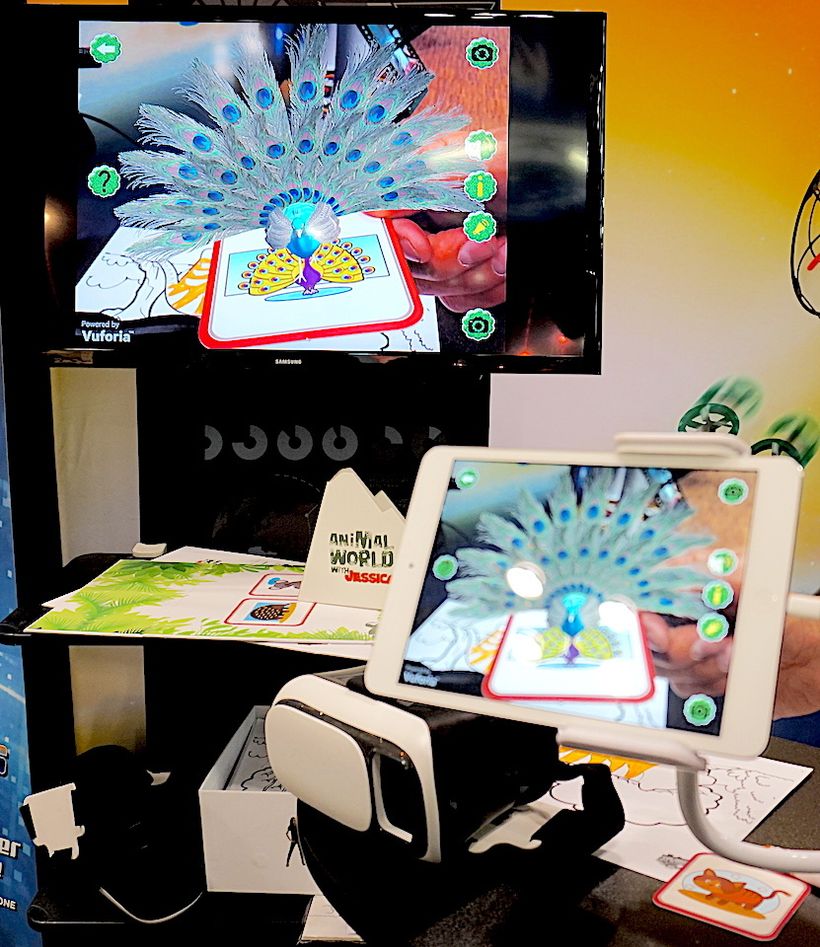
Robot Toys
A plethora of companies have been developing simplistic robot toys and robot learning and construction kits for the last few years. But Fisher-Price has built instead an inexpensive version of a home robot designed to help your youngest kids learn while playing.
The company’s cute, nearly foot-tall Teach n’ Tag Movi ($49.99, fall) is an interactive learning buddy that can follow directions, play games and displays animated facial expressions that help give it a personality. It can roll around via voice command on three wheels on nearly any surface.
Movi, which will operate on three C cells and is designed for youngsters 3-6, includes three play modes: Alpha Fun Actions, Think & Move Shapes and Learn & Play Games including Red Light/Green Light and Silly Sounds Tag. Two buttons on top of Movi allow for a child’s direct input.
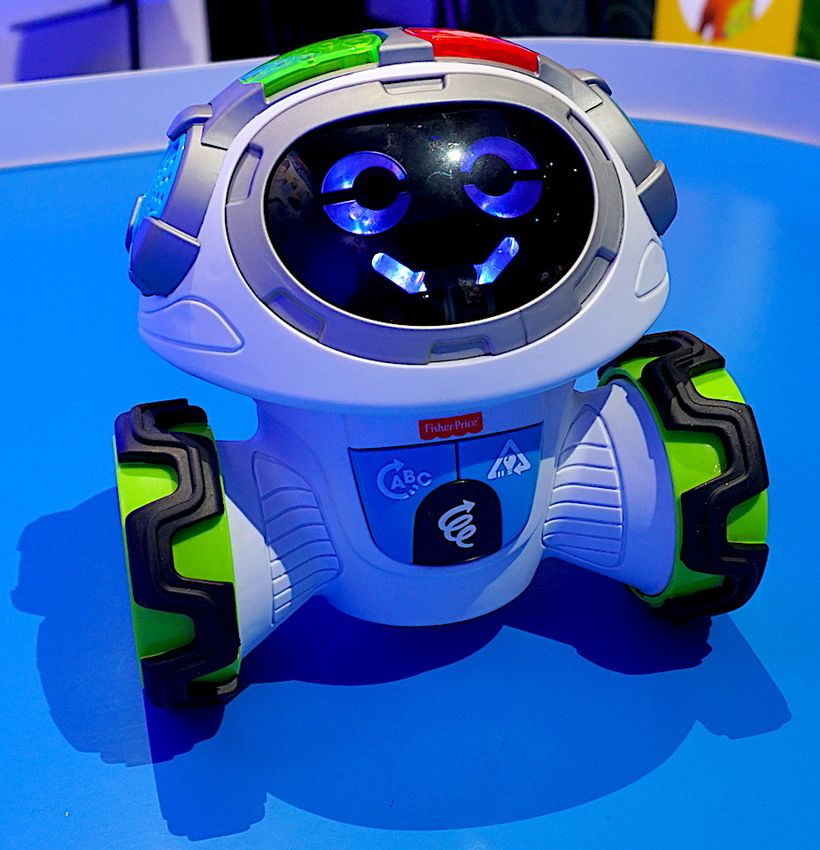
Not quite Isaac Asimov’s Robbie, the first robot presented in his “I, Robot” collection, another, more optimistic look at our robot buddy future, but getting there.
Hopefully, these robot, VR and hologram toys won’t cause the mischief the sci-fi playthings do in “Mimsy,” but merely prepare your prodigy for life in their non-fictional future.







